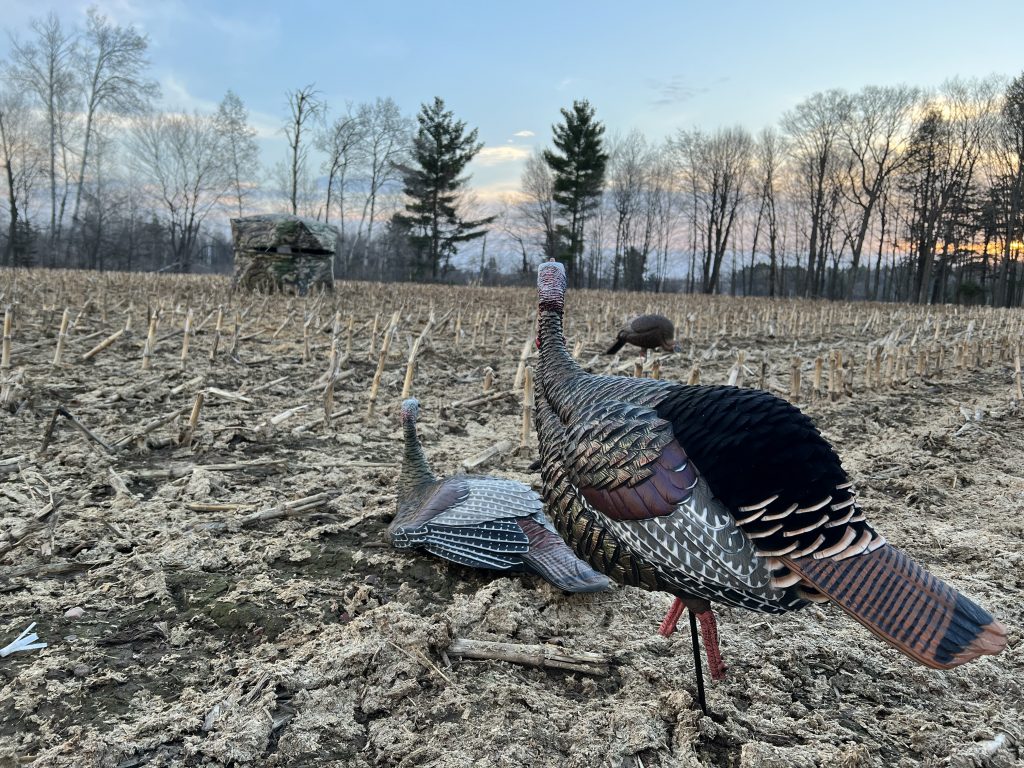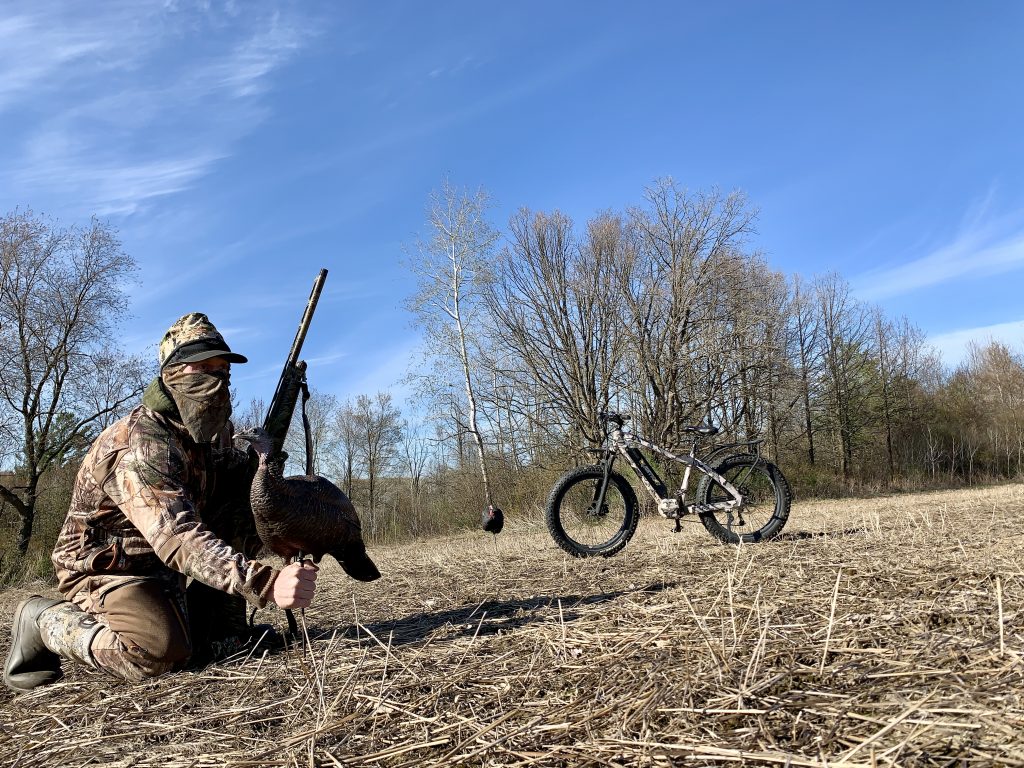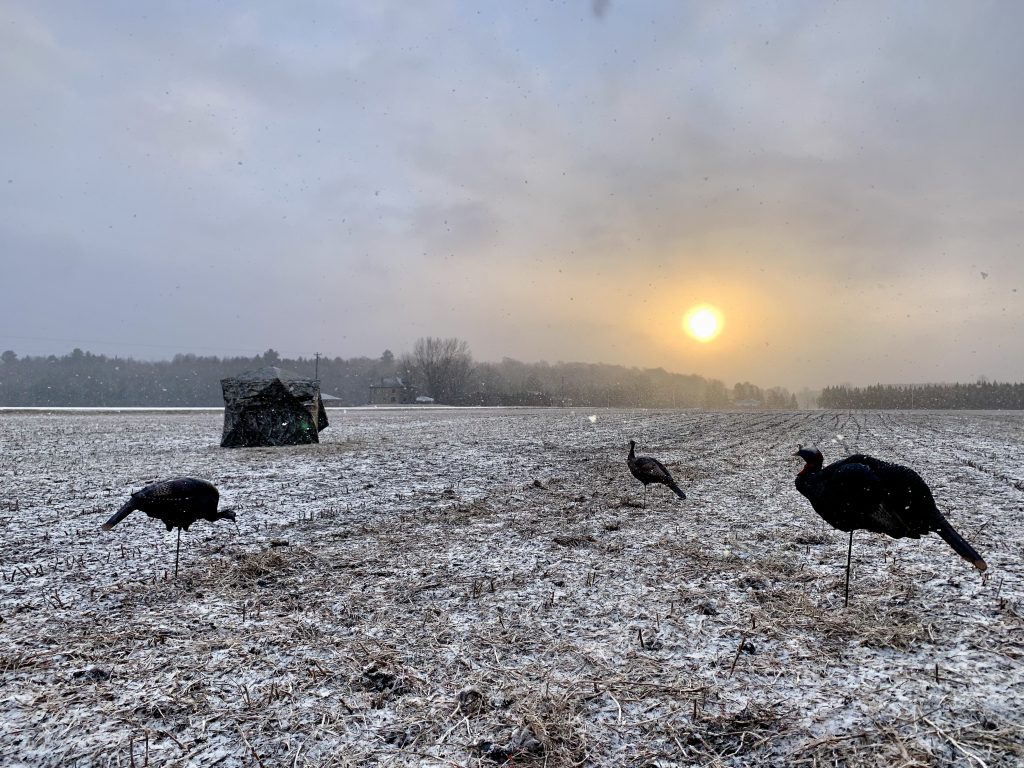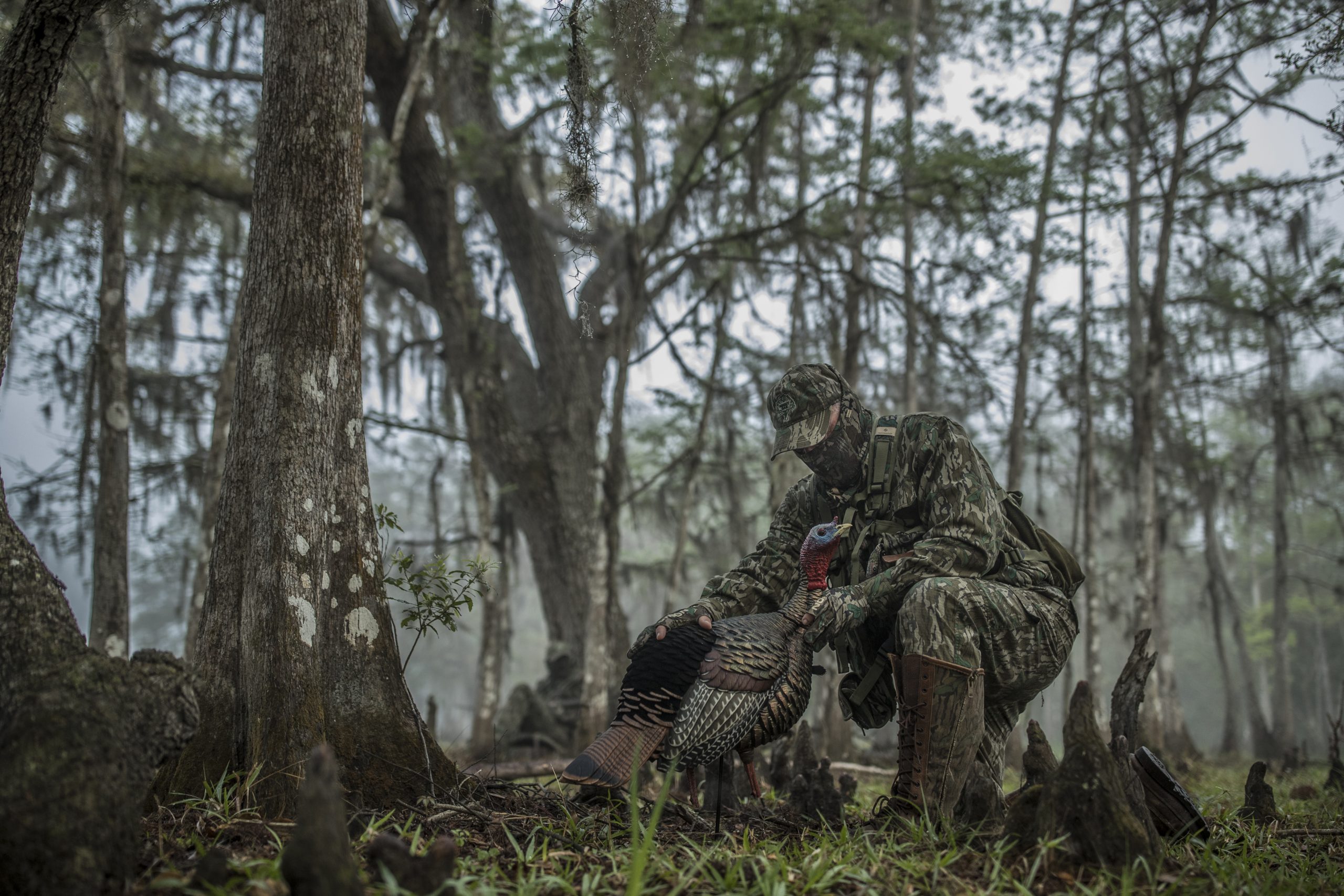Decoying in Detail
Some gobblers fall for almost any calling or decoys, but consistent decoying success comes from considering small details.
A gobble boomed from the timber behind the blind my wife, Becca, and I had positioned over a corn-stubble field before dawn. I peeked out the back and saw two gobblers rapidly beelining toward the field. As the longbeards breached the field edge, they slowed, posing and fanning for our hen decoys. As they inched closer, I said, “Draw your bow.”
The birds walked within range, and I whispered, “Take your time.” Moments later, her broadhead pierced the bird she’d selected, and the gobblers retreated to the timber, her bird clearly moments from a lights-out fate. About 20 minutes later, I sneaked to where they’d run. I peeked over an embankment along the field edge and saw the second gobbler atop the dead bird Becca had arrowed. He’d gone only 30 yards.
The previous morning, we had positioned our blind and decoys at another location, and the gobblers didn’t fall for it. It wasn’t a poor setup, but it simply didn’t work. Time after time, I’m reminded that decoying success is usually the result of addressing details. Let’s cover four important considerations.
Spend Some Money
Years ago, I retired my rubber fold-up decoys after being introduced to a hen decoy manufactured by Dave Smith Decoys. The realism sold me. The price tag was high, but because of my love for turkey hunting and the decoy’s quality, I bought it. My encounters and success increased, and I also eventually bought Dave Smith’s 3/4 Strut Jake. My success skyrocketed.

If you use decoys that don’t look like real turkeys, you’re limiting yourself. Again, I used cheap ones for years, and I can count the number of toms I bow-killed over those decoys on one hand. They rarely bring birds in close, especially in areas that see hunting pressure. Scrap those cheap decoys and get some realistic ones. My favorites are models by Dave Smith and Avian-X. They’re fairly expensive, but if you take care of them, they’ll last many years and bring in far more gobblers than the $10 to $20 decoys you bought when you started hunting turkeys.
Use Topography to Your Advantage
One element that made the setup on my wife’s successful hunt more effective was the fact that we moved our blind and decoy to the highest elevation of the field. Plus, the birds had been roosting on the timbered ridge that adjoins the field right where we set up, so it was a direct route for a bird to enter the field.
In the past, I’d set my decoys where I thought birds would enter a field, and although I had some success, I also had plenty of turkeys skirt my setups. So, I started positioning my decoys at the highest elevation in the immediate area. For some reason, gobblers aren’t often susceptible to calling and decoying downhill from their current location. They’ll gobble their heads off, but I find that they’ll rarely come in.
So, rather than set up where I think gobblers will be, I set up on the highest and most visible elevation in that area. It has boosted my decoying response rate. The nice thing is that you don’t need daylight to identify the highest point. I use the HuntStand Pro app’s Terrain and 3D layers to study the area for elevation and topography before my hunt.

Use Travel Routes
Thoroughfares such a shelf above creek beds or logging roads generally get a lot of turkey traffic. If you run trail cameras during turkey season, you’ve probably seen this to be true. Gobblers like to strut their stuff in areas where a traveling hen will likely see them from a distance. They also can get from point A to point B quite fast on those paths of least resistance.

Therefore, turkey travel routes are great places to set your decoys. A gobbler that flies down onto a logging road or pops out of the thick timber onto a road typically has great visibility up and down the path. So, even if you’re 200 yards off the mark but the logging road provides good visibility, you’ll usually be in the game.
Another thing with travel routes is they can see activity all day. If you’re content to remain stationary and call every 20 to 25 minutes, a travel route such as a logging road or creek shelf can be dynamite, especially during the period of the season when gobblers split from hens around late morning to midday.
Harness the Sun’s Glare

This is one of the most overlooked details, especially when setting up quickly on a roosted gobbler before sunup. During my early turkey hunting years, I used to set up before considering the sun. The problem is that when the sun rises and shines on you, you’ll struggle to see your shotgun bead or bow-sight pins, and you’re highlighted and unable to move undetected.
If I’m walking across a field toward a roosted bird that’s straight east, I’ll set up in the field as close to him as I can reasonably get (usually about 125 to 200 yards), and I’ll set my decoys north, south or west of my position so the sun won’t shine into my blind. When I hunt afternoons, I position my blind looking east, south or north. It’s always best to have the sun behind you so approaching birds are looking into the sun, which makes it far more difficult to be spotted as you raise your shotgun or draw your bow. Before setting up, always know your directions, and anticipate what the sun will do as your hunt progresses.
Conclusion
Like anything else, decoys are tools that can help or hurt your strategy. After 22 years of hunting turkeys, I’ve learned many details. There’s always the question of whether to put out a jake decoy, but I believe the four details above are the more important parts of the equation. Follow these tips, and I believe you’ll have the best decoying success you’ve ever experienced.
